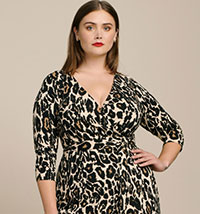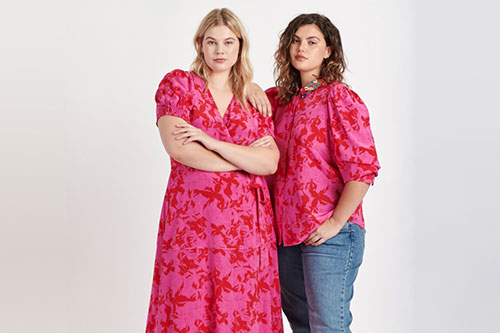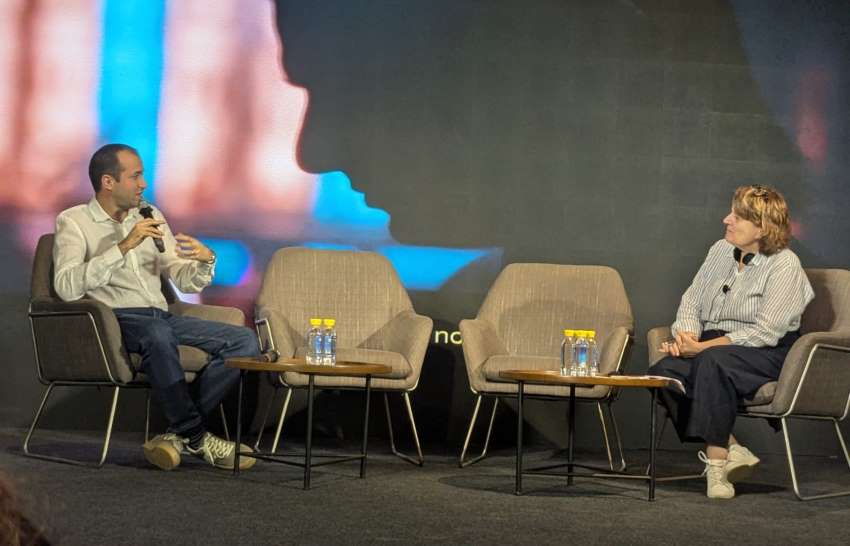FW
The 7th edition of China Homelife And China Machinex India 2019 will continue to focus on the increasing trade and building sustainable relationships between Chinese and Indian companies to congregate and conduct business. To be held from December 11-13 at the Bombay Exhibition Centre, the event will witness several exciting partnerships and announcements that promise to augur in new trends in the industry.
Confederation of Indian Industry (CII) will organising China-India Economic Forum on December 11, 2019. The objective of this forum is to deepen bilateral relations, enhance economic engagement and explore various trade opportunities between India and China. It is also being supported by associations in FMCG and Core Industry such as BIA, PWAI, ICIB, AFMT, etc.
. The expo will be marked by over 2000 exhibitors including industries players like FPM – Unimold Asia(Injection molds, casting molds), Hangzhou Weijiamei Electric Appliances (Rice cooker, Ceramic cookery), Wenzhou Youlian Machinery Manufacturing(Production Line, Filling and Capping Machine)and Hangzhou Standard Mayo Industrial(Fitness Equipment). The expo will also see participation from countries such as Poland, South Africa, Egypt, Turkey, Kazakhstan, Nigeria, Brazil, Mexico, UAE, Jordan and Kenya. The show also takes place in 12 different countries every year.
South Africa’s clothing retailers have decided to purchase more of domestically manufactured clothes, shoes and leather goods over the next few years in an attempt to boost the industry.
This undertaking by some of the biggest players in the country’s retail sector will boost the acquisition of locally produced goods from its present level of 44 per cent to 65 per cent by 2030.
In addition illegal imports will be tackled and unions have bound themselves to adjustments in the employment environment, which would increase competitiveness. More than 60 per cent of textile, clothing, shoes and leather products for the local market are presently imported. Manufacturing companies have promised substantial investments over the next five years. The implementation of the textile master plan will create an additional 1,20 000 employment opportunities in the value chain, with 70, 000 of these being in manufacturing.
The textile industry has been pleading for protection and intervention since the 1990s. The industry has lost about 1,20, 000 jobs since the drastic reduction of import tariffs during that period. The industry presently employs about 95, 000 people and contributes 2.9 per cent to South Africa’s GDP. Abundance of cheaper products from China led to the loss of nearly two-thirds of the sector’s jobs over the past two decades.
Kingpins New York will relocate its latest edition to Amsterdam. The trade fair will now be held at the SugarCity site instead of Westergasfabriek.
The transfer of the event will involve the expansion of its space by 40 per cent, from 6,503 sq. mt. to 9,290 square meters. However, the new location will not affect the schedule of the event, which is planned between April 22-23, 2020.
Founded in 2004 by American businessman Andrew Olah, Kingpins has established itself as one of the key events for the denim industry. Since then, the fair has been exporting the program to different locations of the planet. The fair is also organized in Amsterdam and Hong Kong.
Though the global garment industry has always been a female-dominated industry, garment companies have started focusing on women’s empowerment only now says UK-based data analytics and consulting company GlobalData. Several companies are taking action individually and in collaboration with other members of the industry to promote female empowerment within their value chains. A worker training toolkit includes best practices for training of women and promoting gender equality in the supply chain. Care Australia and the Cotton On Group are also collaborating for a two-year project which will help increase the number of women in leadership positions within garment factories in Bangladesh. Shop Direct, Next and Varner have been working on improving the work conditions for young women in South India's fabric mills. They have been able to engage with around 9,500 women in the first phase of this scheme.
With increasing pressure on retailers and brands to ensure the ethical treatment of workers in their supply chains, there has been a focus on empowering women in their roles, allowing them to have a voice and access to better opportunities. This is starting to happen as these initiatives gather pace, and companies are also ensuring they use their collective influence to ensure these programs have a lasting impact.
H&M has partnered a startup Unspun on a project that recreates a 3D body scan into a pattern that can be used to customize jeans. H&M will begin implementing the project in its stores next year. Since last September, H&M’s innovation hub, The Laboratory, has been making the first software tests with one hundred clients of the Weekday chain. Customers are given the opportunity to customize Weekday jeans styles changing its trim, stitching and pockets and then using their body scan to fit the jeans. For its production H&M uses its own suppliers, with a lead time of ten days.
The next challenge for H&M will be to scale it up. The group feels this has the potential to be very disruptive and redefine the entire system. 3D body scanners are 3D scanning systems designed to capture in three dimensions the full body of a person. The result obtained is an accurate 3D model (also called 3D avatar), allowing to visualize the exact body shape and get accurate data such as body measurements, posture analysis etc. Originally developed for the fashion industry as a fast and accurate 3D measurement solution, 3D body scanners are now used in various fields such as healthcare, 3D figurines and 3D photo, fitness or entertainment.
Indian textile and clothing exports to Vietnam grew 48 per cent during the last two years. India’s share in Vietnam’s imports of manmade fiber textile is 3.34 per cent. Of Vietnam’s total textile imports, India has a 2.29 per cent share. So there is significant untapped potential for trade in textiles between the two countries. In the first 10 months of 2018, bilateral trade was up 47 per cent over the same period in 2017, bringing the countries closer to the target of 15 billion dollars in two-way trade in 2020.
India is among major material suppliers of Vietnam’s garment and textile sector. India hopes to be a reliable partner in supplying yarn, fabrics, and machinery at competitive prices. Under the India-Asean FTA most types of yarns, woven and knit fabrics can be imported duty-free from India.
Vietnamese companies have been invited to participate in a buyer seller meet to be organised in Coimbatore, March 17 to 29, 2020. Visitors from 40 countries are expected to participate in the event for sourcing varieties of yarns, fabrics, made-ups, home textiles and technical textiles from India. Buyers from Vietnam will be eligible for full hospitality, including complementary return airfare, accommodation and transport.
More and more fashion retailers are now disclosing details of apparel supplier factories. Amazon has disclosed on its website the names, addresses, and other details of more than 1,000 facilities that produce Amazon-branded products. It follows similar moves in the past from Fast Retailing, Primark, Adidas and Gap.
Similarly, Fast Retailing has published a list of the core fabric mills used, while Walmart’s fashion brand, George, is to start publishing a list of second tier apparel factories – those typically dyeing, printing and finishing garments – on its website. However it’s doubtful if the information a tier one supplier list provides can truly empower end consumers to think and act more sustainably.
It’s a commendable first step to promoting better conditions for workers, but clothing supply chains are highly complex and can span several international markets, each with differing labor laws. The question is why all brands and retailers aren’t disclosing supplier lists for the product’s entire journey, particularly if they are taking steps to prevent labor abuses in their supply chains. This is the sort of information consumers need to enable them to make informed choices about their purchases and to influence how they use and take care of those products.
"Though traditionally luxury fashion has always been size exclusive, in recent times, it has been forced to incorporate the concept of inclusivity into its DNA. As a recent Coresight Research notes, demand for plus size women’s clothing in the US is growing by around by 3 per cent to reach $36.3 billion by 2025. Of this demand for luxury plus-size apparels, only 6 per cent is being sold online, reveals the data from Edited Retail."
 Though traditionally luxury fashion has always been size exclusive, in recent times, it has been forced to incorporate the concept of inclusivity into its DNA. As a recent Coresight Research notes, demand for plus size women’s clothing in the US is growing by around by 3 per cent to reach $36.3 billion by 2025. Of this demand for luxury plus-size apparels, only 6 per cent is being sold online, reveals the data from Edited Retail. According to the firm’s market analyst, there is a huge demand for inclusivity in all areas of retail, be it dress sizes in apparel or skin tones in lingerie and beauty. This demand for size-inclusivity is likely to increase in future also.
Though traditionally luxury fashion has always been size exclusive, in recent times, it has been forced to incorporate the concept of inclusivity into its DNA. As a recent Coresight Research notes, demand for plus size women’s clothing in the US is growing by around by 3 per cent to reach $36.3 billion by 2025. Of this demand for luxury plus-size apparels, only 6 per cent is being sold online, reveals the data from Edited Retail. According to the firm’s market analyst, there is a huge demand for inclusivity in all areas of retail, be it dress sizes in apparel or skin tones in lingerie and beauty. This demand for size-inclusivity is likely to increase in future also.
The first brand to launch its extended sizes collection was DVF, maker of the iconic wrap dress. The brand’s collection was launched in collaboration with retailer 11 Honoré. However, DVF isn’t the only luxury brand to turn its attention to plus-size consumers. Italian luxury house Dolce & Gabbana has also announced plans to extend its sizing chart.
Applying inclusivity to store merchandising
Brands are applying the idea of inclusivity to store merchandising too. They are integrating all their clothing sizes together. Traditional retailers including Saks Fifth Avenue and Nordstrom have already expanded their plus-size offerings. Nordstorm plans to expand its collection of size-inclusive apparels. The retailer started a size inclusivity initiative in October 2017and in less than two years, offered extended sizing in more than 100 brands in over 30 stores and online.
sizes together. Traditional retailers including Saks Fifth Avenue and Nordstrom have already expanded their plus-size offerings. Nordstorm plans to expand its collection of size-inclusive apparels. The retailer started a size inclusivity initiative in October 2017and in less than two years, offered extended sizing in more than 100 brands in over 30 stores and online.
Meanwhile traditional, new retailers are also taking up the plus size market. Retailer 11 Honoré was launched in August 2017 with the goal of merging high-end designers with size-inclusive fashion. The retailer offers clothes starting at size 10 and going up to 24.
Designers face limited retail options
Though designers are extending the size range of their lines, they expect these sizes to offer the same fit and integrity as their straight-size garments. However, for this to happen, they first need to master the grading and pattern development.
As designer Tanya Taylor-a pioneer of plus-size fashion, women in this market do not have access to bold, bright and optimistic fashion options as women in regular markets do. Though their fashion choices have improved, their retail options to leverage these choices are limited.
Taylor expanded her collection two years ago by hiring a new tech team and fit model to help produce a wide range of sizes for her collection. However, the designer is still not able to produce every style in its full size range as a majority of its partners don’t go above a size 14.
Returns are harmful to retailers. A customer may order 20 items, wear half a dozen, then return the lot after 28 days, in various states of disrepair. Online fashion retailer Asos has increased its returns policy from 28 days to 45 days. At the same time, on noticing an unusual pattern of returns activity that doesn’t sit right, that is, if someone is actually wearing their purchases and then returning them or ordering and returning huge bags, Asos deactivates their account.
There are four types of serial returners, compulsive shoppers, wardrobers, social media wardrobers and bracketers. The latter purchasing multiple items in different colors and sizes with no intention of keeping most of them, simply hedging their bets. It is estimated that just 50 per cent of returns goes back into store inventory. The other half comes back in a battered state and has to be returned to the manufacturer or resold. But often they are sold at a fraction of the original cost to discounters or liquidators. Or they are just dumped in landfills since that’s less expensive than carting them here and there.
On the other hand it’s also a fact that the people who return the most are the most profitable customers, with the top five per cent of returners being 30 per cent more profitable.
In a new report titled ‘The Future of Sustainability in the Fashion Industry’, experts from across the globe have painted a bleak future for fashion if we continue with business as usual. However, the report says that a sustainable sector is possible within 16 years if we take the right efforts, have courage and remain committed to the cause.
The report outlines 14 strategies for achieving sustainability, evaluating each for its potential impact and the earliest timeframe in which it could become mainstream.
The strategies include: increased global awareness, fibers and processing innovation, detailed sustainability reporting, worker-driven initiatives, high concentration / cooperation, extended producer responsibility, wages in the fashion industry, clothing as a service, automation revolution, circular economy, consumer level sustainability index, resale/second-hand models, majority of clothing is locally produced and tax regulations for increasing sustainability. These strategies are seen as being achievable by 2035, while two-thirds could even reach mainstream within a decade.
As per the report, one of the immediate priorities is to build a global awareness movement that takes advantage of heightened concern over sustainability issues, such as that generated by Greta Thunberg and the Fridays for Future movement, among others.
It will require huge effort and cooperation from brands, government and policy makers, even consumers. But against the context of heightened concern about environmental and social justice issues, positive change can take place quite rapidly.












